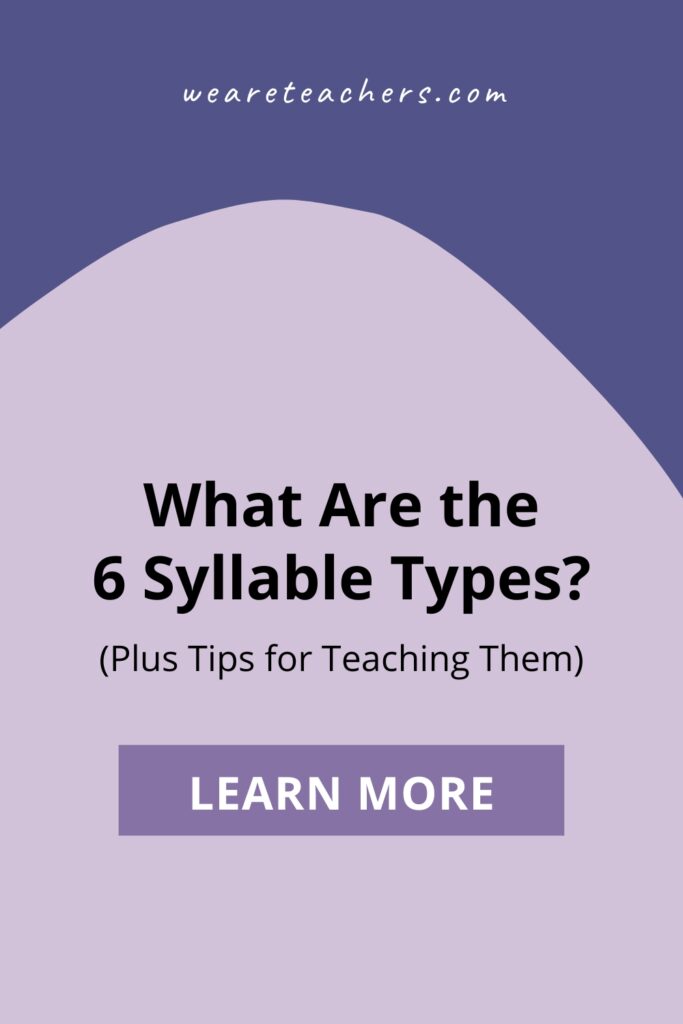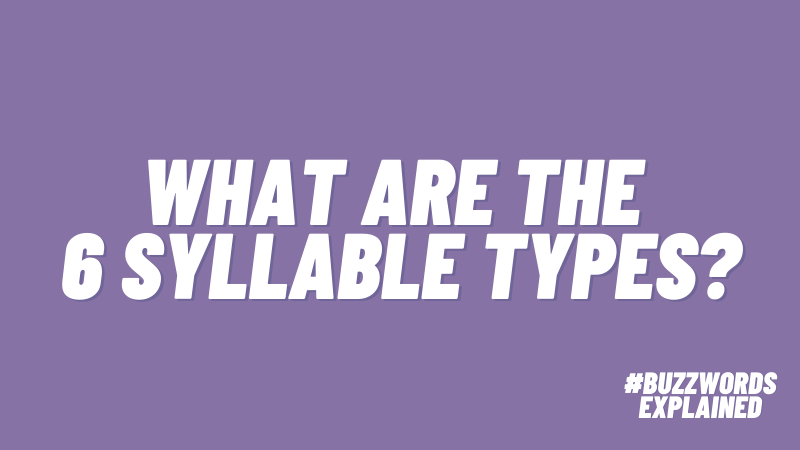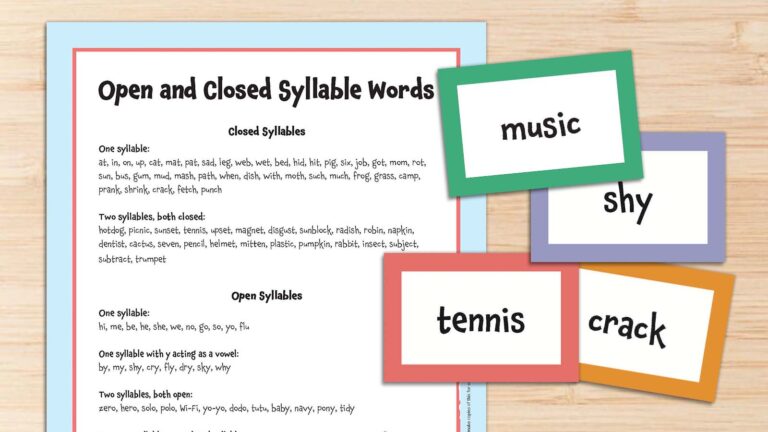Systematic phonics teaching can help new readers cruise through words like “cat,” “mop,” and “pen,” and even trickier ones like “chip,” “shine,” and “goat.” But what about “rocket,” “refrigerator,” or “catastrophe”? Teaching kids how to correctly divide words into syllables and read each one can keep them from resorting to skipping or guessing when words get longer. Learning about the six syllable types in English can be like getting the ultimate key to a secret code for kids. Ready to get started? We’ve pulled together some awesome resources and tips to help you teach your students all about syllable types.
What are the 6 syllable types?
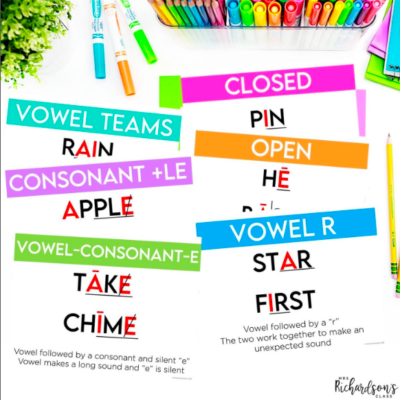
Source: @mrsrichardsonsclass
The credit for mapping out the six standard syllable types in English goes way back to Noah Webster, who wanted to make syllable division more consistent in the 1806 edition of his dictionary. Each syllable in an English word must include a vowel—or y acting as a vowel, like in “my” or “baby.” The arrangement of vowels vs. consonants in a syllable determines what type of syllable it is.
(Note that when we talk about syllable types, we’re focusing on written English. Learning to hear syllables in spoken words—like by “clapping” syllables or counting how many times you feel your mouth open when you say a word—is an important early phonological awareness skill. Teaching syllable types is most helpful when kids are ready for reading and spelling a variety of words.)
The six syllable types in English are:
1. Closed Syllables
Closed syllables have a short vowel sound spelled by one vowel with one or more consonants following it. The consonant(s) “close in” the vowel, causing it to be short. This is the most common syllable type.
Examples: “Cat”; both syllables in “picnic”; all three syllables in “disinfect”
2. Open Syllables
An open syllable has a single vowel at the end, leaving it “open” to make a long sound.
Examples: “No”; the first syllables in “silent” and “music”
3. Vowel + Consonant-e (VCe) Syllables
VCe syllables have a long vowel sound and end with a silent e. (Nickname: “Magic E Syllables.”)
Examples: “Hope”; the second syllable in “complete”
4. Vowel Team Syllables
Vowel team syllables use two or more letters to represent a short, long, or other vowel sound.
Examples: “Wait”; the first syllable in “awkward”
5. Vowel + R Syllables
Syllables in which the vowel sound is followed and changed by r, as in ar, er, ir, or, and ur. (Nicknames: “R-controlled” or “Bossy R Syllables.”)
Examples: “Dark”; the first syllable in “birthday”; both syllables in “further”
6. Consonant-le (C-le) Syllables
C-le syllables are unstressed syllables at the end of a word with a consonant, l and silent e.
Examples: Last syllables in “uncle,” “staple,” “unbelievable”
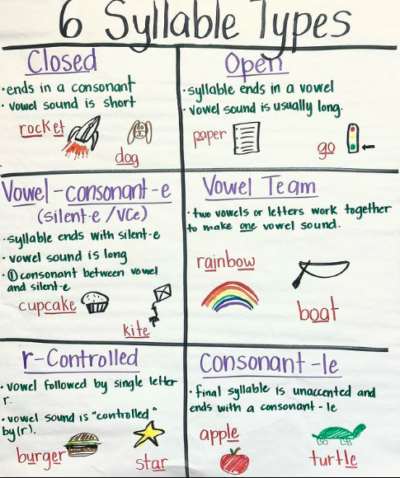
Source: @awalkinthechalk
How knowing syllable types helps kids
1. Syllable type knowledge reduces guessing.
Strategies like “try the short and long vowel sounds and see which one sounds right” may seem helpful to kids, but using phonics knowledge is always better than guessing. Even for one-syllable words, noticing the syllable type can help kids know for sure what sound a vowel represents.
2. Knowing syllable division rules and syllable types boosts confidence.
It’s so empowering to know what to do when you get to an unknown word! For so many kids, learning about syllables is the final piece of the puzzle for putting all their phonics knowledge into action during real-life reading.
3. Knowledge of syllable types can boost fluency.
Tackling words in syllable-sized pieces is always more efficient than laboring over every letter. When kids use their syllable knowledge during reading, they can read more fluently.
4. Learning about syllable types can improve kids’ spelling.
From the simple fact that “every syllable must have a vowel,” to knowing the C-le spelling pattern for the end of words, knowledge of syllable types can spill right over into kids’ spelling.
Tips for teaching kids about syllable types
1. Start early and simple.
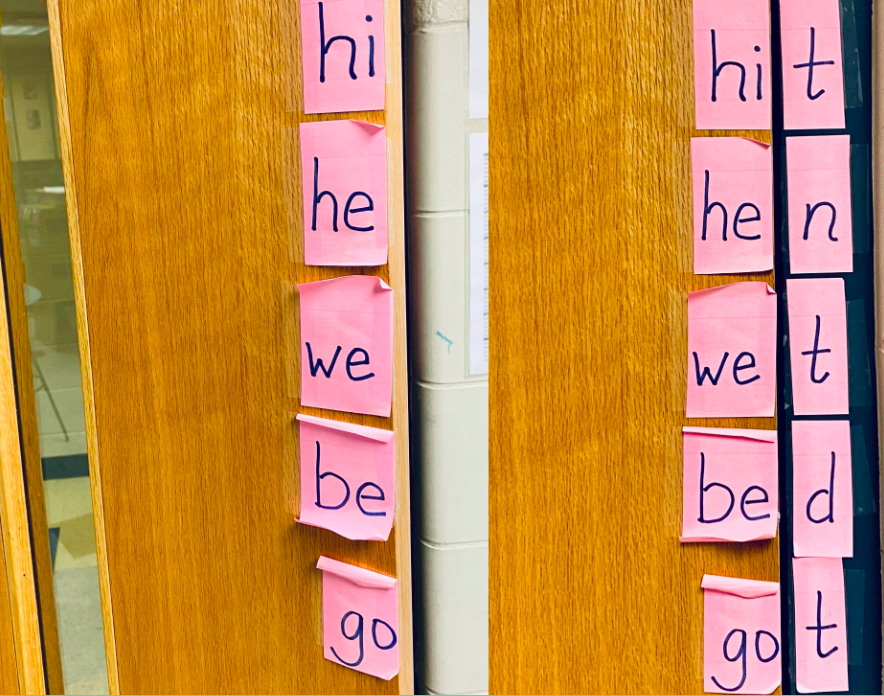
Source: Campbell Creates Readers
There is definitely a lot to learn about syllables! Try moving from simple to complex and coordinating with other grade levels to share the load. If students learn about open and closed one-syllable words in kindergarten, they can build on that knowledge year after year. This strategy for using the door to make open vs. closed syllables memorable for young kids is pure genius.
2. Teach each of the syllable types explicitly.
Being intentional about the order in which you teach syllable types and the examples you use is key. These training videos from This Reading Mama are filled with suggestions for introducing each syllable type. The University of Florida Literacy Institute’s “Teaching Big Words” resource goes deeper into how you could connect syllable learning to the study of prefixes, suffixes, and root words, which is so helpful in the upper elementary grades.
3. Practice syllable division.
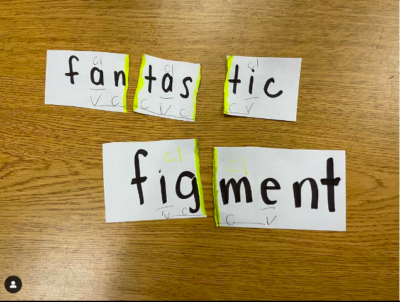
Source: @mrs_besas
If kids are going to use syllable types to read multisyllabic words, they’ve got to know how to correctly divide words into syllables. Learning at the Primary Pond explains a great routine to teach. Lots of practice with examples is essential—even as low-tech as literally cutting words apart! Finally, whether you use the full Orton-Gillingham method or not, their animal names for syllable division patterns are super-helpful for many kids. Check out this summary from teachruncreate.com.
4. Make it memorable.
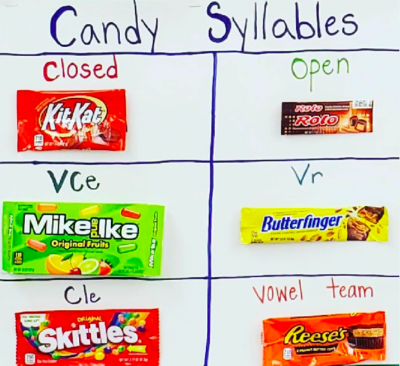
Source: @laugh.learn.grow
There are tons of ways to make syllable information stick in kids’ memories, but what’s better than referencing their favorite food group?
How do you teach students about syllable types? Share your ideas in the comments!
Plus, sign up for our newsletters to get all the latest learning ideas, straight to your inbox.
